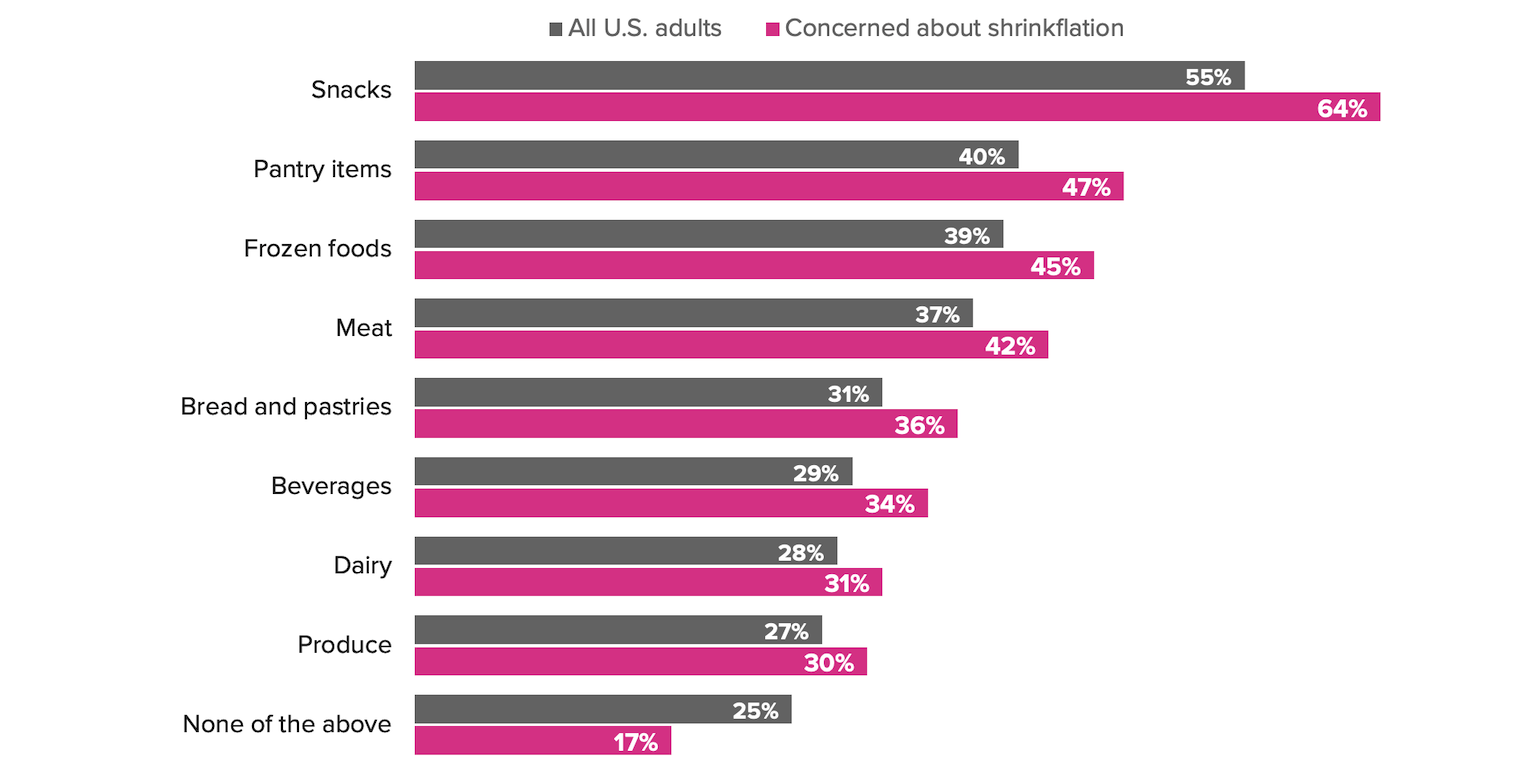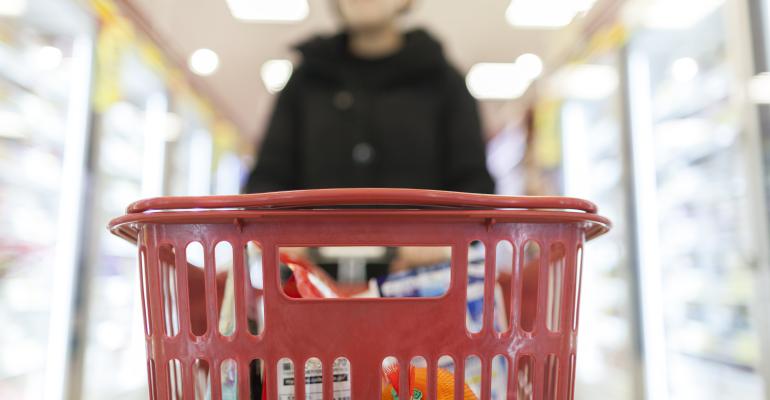TOP TAKEAWAYS
- In consumers’ minds, snacks are the biggest shrinkflation culprit
- Repeat purchases affected, with 3 in 10 adults saying they stopped purchasing from specific brands when they noticed shrinkflation
- Generationally, millennials and Gen Xers were more likely than baby boomers to say they decided to buy a product in bulk when encountering shrinkflation
Consumers are currently hyperconscious around inflation, which translates to additionally being vigilant about “shrinkflation.” So says Emily Moquin, food and beverage analyst at data intelligence firm Morning Consult in a new report on the phenomenon, which is common in the grocery industry.
So first, what is ‘Shrinkflation?’
“Shrinkflation” is the action of reducing the size, weight, or quantity of a product while prices remain the same or even increase. Within the grocery industry, it’s a regular practice, but it can also negatively affect consumers who are already frustrated by rising costs.
How is ‘Shrinkflation’ affecting shopper buying habits?
“No one likes to pay more for less,” as Moquin says in her analysis. And indeed, according to Morning Consults data, the concept of shrinkflation is affecting shopper buying habits by:
- Affecting repeat purchase buying. Some 3 in 10 adults said they stopped purchasing from specific brands when they noticed shrinkflation
- Altering buying habits. With 48% opting to buy a generic brand, 33% buying in bulk rather than an individual item, and 30% who stopped purchasing altogether from specific brands
- Shifting loyalty. Consumers named food & beverage first among the industries where they have switched brands when companies lost their trust
CATEGORIES WHERE SURVEYED PARTICIPANTS NOTICED SHRINKFLATION

In consumers’ minds, snacks are the biggest shrinkflation culprit: More than half of U.S. adults said “they’ve noticed snacks decreasing in size or quantity while prices have either remained steady or gone up, and those who are concerned about shrinkflation are even more likely to say they’ve noticed it happening with their snacks.” Going forward, Moquin says, shoppers are likely to be extra sensitive to perceived package or product changes in this category.
And categories are affected by age. Millennials and Gen Xers are more likely than boomers to notice shrinkflation in produce and meat, where boomers are more likely to notice it in pantry.
Repeat purchases are also an issue, with three in 10 adults noting that they’ve stopped purchasing from specific brands when they noticed shrinkflation. Moquin notes that this loss of loyalty may be hard for brands to recover, as research indicates that while food & beverage as a category is highly trusted, it’s also highly substitutable.
Millennials and Gen Xers were also more likely than baby boomers to say they decided to buy a product in bulk when encountering shrinkflation. The same is true of middle- and high-income consumers compared with those in the lowest income bracket, and Moquin notes wholesalers have an opportunity to reach these groups with communications about bulk savings.
SURVEYED CONSUMER ACTION AROUND SHRINKFLATION

Of those surveyed who noticed shrinkflation:
- Only 19% of respondents said they didn’t take any of these actions, and if concern around shrinkflation grows, that figure might soften even more as consumers make further trade-offs, data indicates
- With the consumer price index for food at home up 13.1% year over year in July, brands need to be paying extremely close attention to consumer sensitivity to these changes
- If brands don’t take action, they risk losing their favor at a time when many retailers and manufacturers are already weathering macroeconomic difficulties





